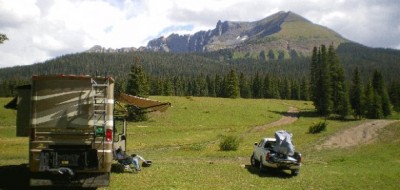By Bob Difley
What could be more enjoyable than roaming around the country in your RV and exploring places you’ve never been before? But if you just go to the major tourist attractions, most popular national parks, and stay in only campgrounds recommended by Tourist Bureaus, Chambers of Commerce, and State Campground Organizations you will miss a lot of what America has to offer.
The following three alternate camping opportunities, from my ebook 111Ways to Get the Biggest Bang From Your RV Lifestyle Buck (PDF or Kindle), could lead you to many memorable places that most RVers overlook or miss.
 Indian Reservations
Indian Reservations
Indian reservations are scattered about the country with the largest reservations in the western deserts. Each tribe has its own rules regarding camping and depending on the reservation, you can find any style of camping from a full service hook-up campground to boondocking on open land (photo – Lake Tombigbee campground on Alabama-Coushatta Reservation east of Livingston, Texas). Always check in with the tribal headquarters before setting up camp. Most have Websites where you can get info. A good place to start is the American Indian Web site.
 National Wildlife Refuges
National Wildlife Refuges
In addition to all the state wildlife areas around the country, the U. S. Fish & Wildlife Service manages the world’s premier system of public lands and waters set aside to conserve America’s fish, wildlife, and plants. Since President Theodore Roosevelt designated Florida’s Pelican Island as the first wildlife refuge in 1903, the System has grown to more than 150 million acres, 551 national wildlife refuges and other units of the Refuge System, plus 37 wetland management districts.
The guide book to the refuges that I use is 714 pages long–though you can find them easily on the Internet. Not all of them allow camping, but many do. Locate the NWR by state to find those that match up with your travel plans and that allow camping (photo – Sheldon NWR, Northwest Nevada). Don’t forget to check the dates of the hunting seasons, a good time to avoid them. However, in the off season they are great places to see birds and wildlife, as well as enjoy quiet and solitude.
Local and Regional Parks
Some small towns allow an overnight stay in local or city center parks for visitors passing through, but often there is also a local unpublicized park used mostly by locals that permits camping. Ask at the local chamber of commerce, police station, or RV dealer. Staying in or near small towns that do not have national tourist attractions is a great way to see middle America and can be wonderful, friendly places to stroll about and talk to the locals–and all of them have interesting local history stories.
For more RVing articles and tips take a look at my Healthy RV Lifestyle website, where you will also find my ebooks: BOONDOCKING: Finding the Perfect Campsite on America’s Public Lands (PDF or Kindle), 111 Ways to Get the Biggest Bang for your RV Lifestyle Buck (PDF or Kindle), and Snowbird Guide to Boondocking in the Southwestern Deserts (PDF or Kindle), and my newest, The RV Lifestyle: Reflections of Life on the Road (PDF or Kindle reader version). NOTE: Use the Kindle version to read on iPad and iPhone or any device that has the free Kindle reader app.

